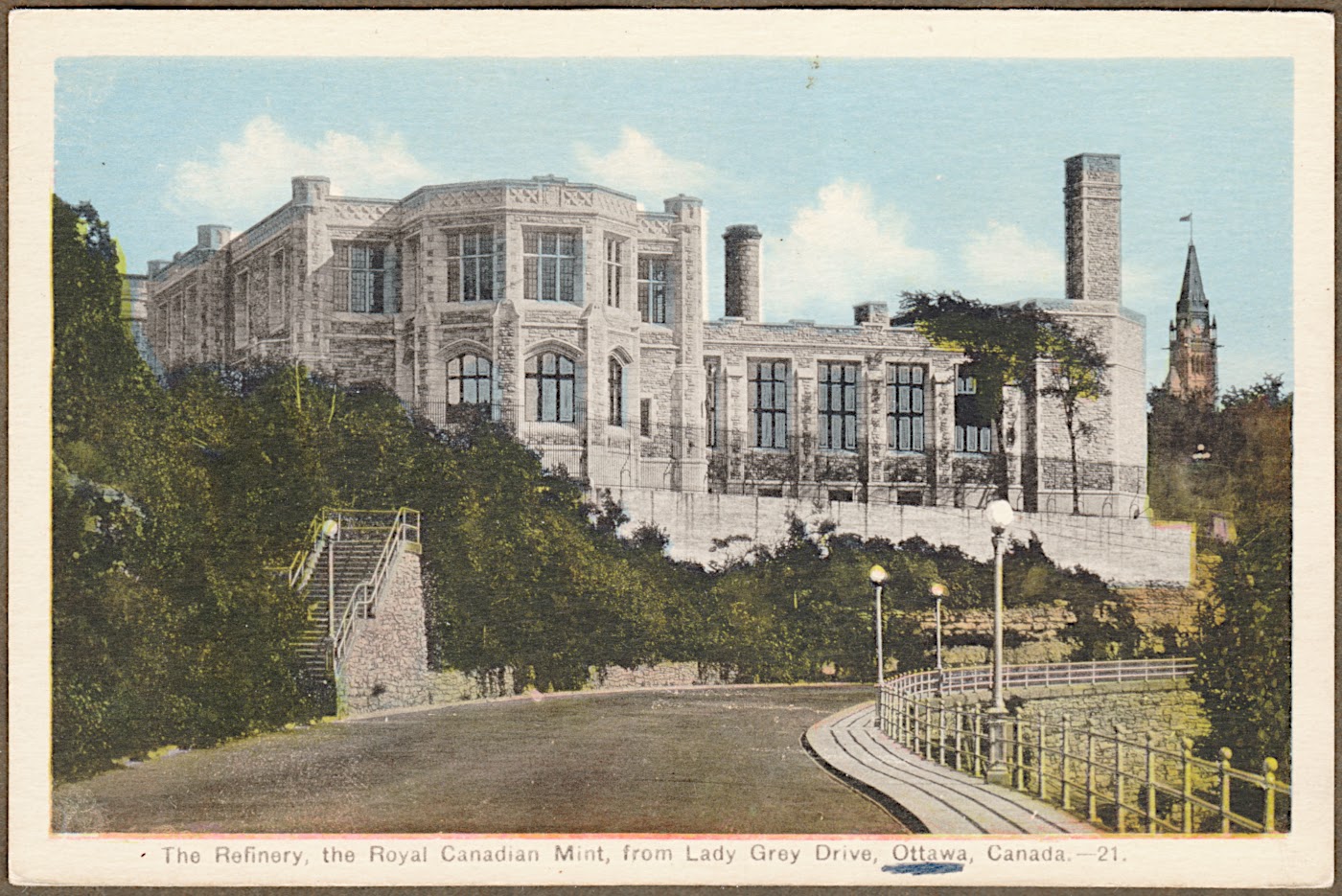This is an odd pairing, but I've wanted to share these images for some time.
First, here are some of the leaders of the CRHA, Montreal in 1950.
The photo was taken 75 years ago, during a fantrip to Huberdeau, Quebec, on CNR diesel railcar 15820.
As the editor was reluctant to tag everyone in the photo,
it was left to LC Gagnon to fill in the blanks below.
Many readers will recognize these names.
 |
| from: Canadian Rail; June 1975; CRHA. |
* * *
The Royal Canadian Mint, Postcards
These undated, unused postcards were accumulated over the years. Except for the third card, which shows the distinctive autos of that era, you are on your own to assign dates. I think the 1930s-1940s would be my best estimate of their period of origin.
A really nice film from 1920 showing daily operations at the Mint is linked at the end.
Albert Grey (1851-1917) was Governor General of Canada from 1904 until 1911. He and Lady Grey were present at the opening of the Mint in 1908 and the road between the Mint and the Ottawa River is still known as Lady Grey Drive. The first two postcards show the river side of the Mint.
When the assets of the Royal Mint at Ottawa were transferred to Canada in 1931, the name was changed to the Royal Canadian Mint.
Today, in our post-COVID 'cashless' society ... young people probably have difficulty imagining how people once conducted most of their monetary transactions with coins and currency: at the grocery store, or department store, paying for gasoline, buying stamps at the post office, paying the 'paperboy' or getting a Gazette from an 'honour box'.
... My own use of coins is now limited to infrequently actuating a car wash. My skills of 'making change' (counting up from the purchase price to the value of the currency tendered by the customer - as they watch) and rolling coins in the plain rolling papers supplied by the banks ... are now as useful as DOS commands.
Similarly, all of us probably have difficulty imaging a time when there was a desperate need for waterproof, durable, metal coins in Canada - to enable day-to-day transactions to be completed in a convenient manner. This need was often most acute where significant economic activity developed in wilderness regions.
The Hudson's Bay Company, the railways, and post offices introduced metal tokens and coins into their geographical areas of activity. However, there were often occasions when the distribution system for 'money' didn't meet the needs of the people of Canada.
In a 1953 history of Canadian chartered banking, there are many examples of bankers being sent into areas of rapid resource development without buildings, vaults, or staff. In some cases, these wilderness bankers slept in tents with their 'deposits' under their pillows.
... As settlements spread - far from the big cities - Canadians needed both money and a distribution system to ensure that the form and denominations of money available met their needs.
At times, foreign currency was imported and used by people by preference ... or in desperation.
The country needed to have its own mint ... and a banking system.
Many readers will be able to accurately date the view above by the cars. Maybe the late 1950s? In the foreground, the combination of streetcar tracks and cobblestone pavement is quite a practical combination.
... With plenty of cheap semi-skilled labour ... one can imagine that replacing streetcar tracks and adjacent pavement on a city street took less time than it does today. And like them or not, cobblestones had built-in 'traffic calming' properties.
* * *
Interior Postcards of the Royal Canadian Mint
This is an 'un-enhanced' sample of the interior postcards which follow. When possible, I buy postcard 'sets' to keep them together - so I bought everything this vendor had at the time.
I heartily endorse the archive.org film linked at the bottom of this post. It is from 1920 (as you will see on the coins being stamped). It is a great film which shows moving images of obscure procedures like the 'ringing of coins'.
The introduction of chlorine gas into the impure molten gold
causes the other metals to bind into removable chloride compounds,
but the metallic gold is generally not affected in the process.
This is the Miller Process from 1867.
* * *
From the middle of the Great Depression, come the following photos and description of the Mint's operations.
From: Canada 1935. The Official Handbook of Present Conditions and Recent Progress; 1935; Dominion Bureau of Statistics.

Over time, the banks reluctantly gave up their privilege of issuing their own currency (Bank Notes).
However, one can understand the attraction to the private issuer of being able to 'print your own money'!
Here is the link to that excellent silent film.













